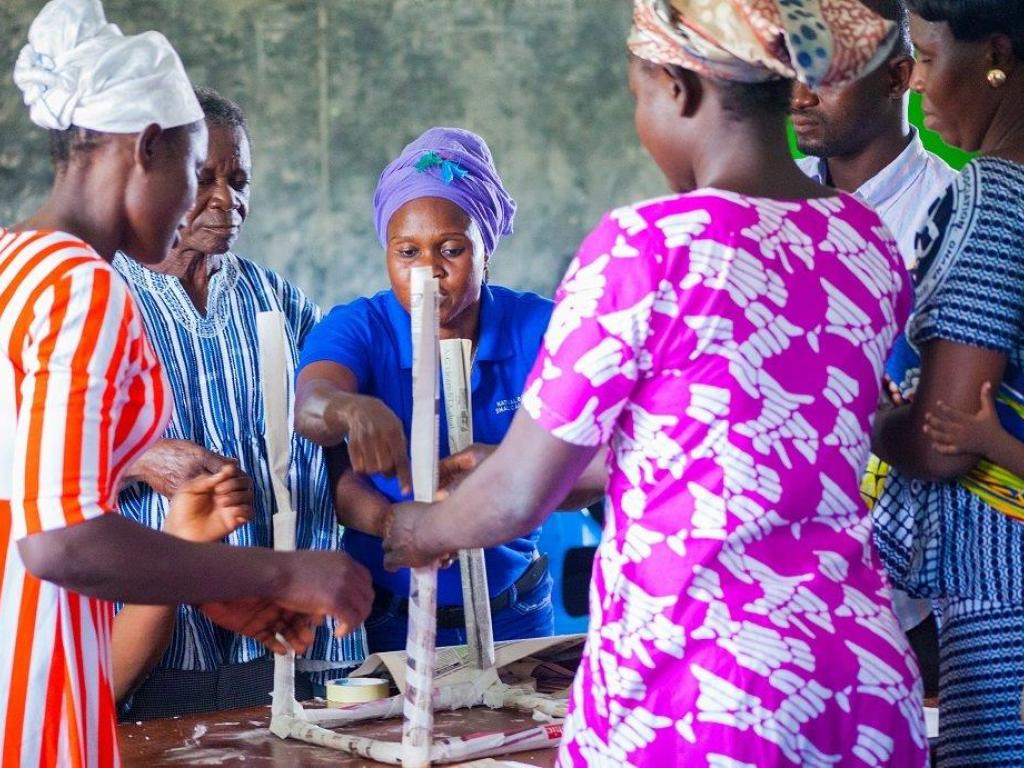Who are the most vulnerable? Challenging assumptions to go beyond the obvious

By Lucia Scodanibbio, Daniel Morchain, Nitya Rao

Climate change affects different people in different ways. This difference stems from a combination of, on one hand, the biophysical hazard itself and, on the other, social and institutional barriers that equip some to respond better (often, but not always men) and leave others (often, but not always women) ill-equipped. Understanding the factors that make people vulnerable and those that influence and limit both the choices that are open to some and not others, and their capacity to adapt to the impacts of climate change, can help to support risk management interventions and enable sustainable and equitable adaptation.
Yes, we are hinting at gender inequality as a key factor making adaptation efforts ineffective, but that is just the tip of the iceberg. Researchers and practitioners involved in ASSAR provided ample evidence to show that commonly-held beliefs about women being the most vulnerable and needing to be the target of interventions should be challenged as local realities show much more complexity and variance. Similarly, designing responses assuming that households are roughly homogeneous in their structure can lead us to overlook more nuanced and diverse contexts, which are however increasingly common.
In semi-arid regions of Kenya, for example, more extreme and frequent droughts disproportionately impact many young pastoralist men who need to travel longer distances to find pasture for their animals and often end up in conflict with rival ethnic groups. Unable to sustain this livelihood, many seek employment in cities, but due to limited skills, end up in insecure and unsafe enterprises. In this context, many women opt not to marry, or separate from such men, and as a result, diversify their own livelihoods and create new household configurations with female kin, to be able to manage domestic and work chores. While these women’s ability to sustain themselves often enhances their sense of self, the activities they engage in also frequently threaten their health and their lives (e.g. through prostitution or selling the stimulant miraa) in the long term.
If policies and interventions continue focusing on a ‘traditional’ understanding of the relationship between man as strong, provider, head of household; and woman as weak, recipient, dependent, then they will continue failing to see a much more complex reality, in which some men are just as, if not more vulnerable than women, and female-headed, multi-generational households are increasingly more common.

ASSAR research in Ghana, Mali, Ethiopia, Namibia and three different states of India also reminds us that the interaction of different aspects of social difference – such as ethnicity (and caste in India), age, income, education, marital and migrant status – leads to varying vulnerabilities to climate risks and different abilities to respond. While the intensity of a storm or drought affects everyone’s ability to respond, the privileges or injustices caused by social norms and institutional power structures (which vary according to a person’s identity) also play a role, oftentimes more than the climate shock itself. Likewise, ASSAR research shows us that the interaction of local factors, household structure and individual personal characteristics results in highly differentiated individual circumstances, making generalisations about men and women as categories an unhelpful exercise.
For example, while in some cases the new livelihood opportunities women are accessing increase their income, they can feel overburdened when their domestic chores remain unchanged. Furthermore, in some households, while men migrate women’s immobility due to social norms constraining their choices means they find themselves with new responsibilities and a limited ability to cope. Yet in others, such as in Namibia and Ghana, both young men and women may migrate to look for job opportunities, leaving the elderly and children behind. But there are also signs of hope. In some households in peri-urban Karnataka (India), women’s new roles have led to some men looking after children and taking on tasks that traditionally did not pertain to them. All in all, however, the outcomes vary depending on different personal attributes, like one’s educational level, socio-economic status or ethnicity.
Seeking to gain a deeper understanding of the local reality and of the way in which different facets of identity can shape personal and group vulnerabilities, agency, influence and adaptive capacities is therefore critical for both good research and effective adaptation – with its ultimate implications around social justice. Otherwise a focus on those who are commonly lumped together as ‘most vulnerable’ in international discourses remains vague, often inaccurate and counterproductive. In the same vein, our findings show that it is crucial to work with both men and women to challenge social norms and traditions, but also to support both with skills-building, supportive structures to – for instance – manage childcare and domestic burdens, and credit facilities to support livelihood diversification.
Read more about the findings and outputs related to our gender and social differentiation research including through a series of infographics, a webinar and a blog that were launched at the United Nations 62nd session on the Commission on the Status of Women (CSW) in New York in March 2018, which focused on gender and the empowerment of rural women and girls.
*Blog first published on CDKN